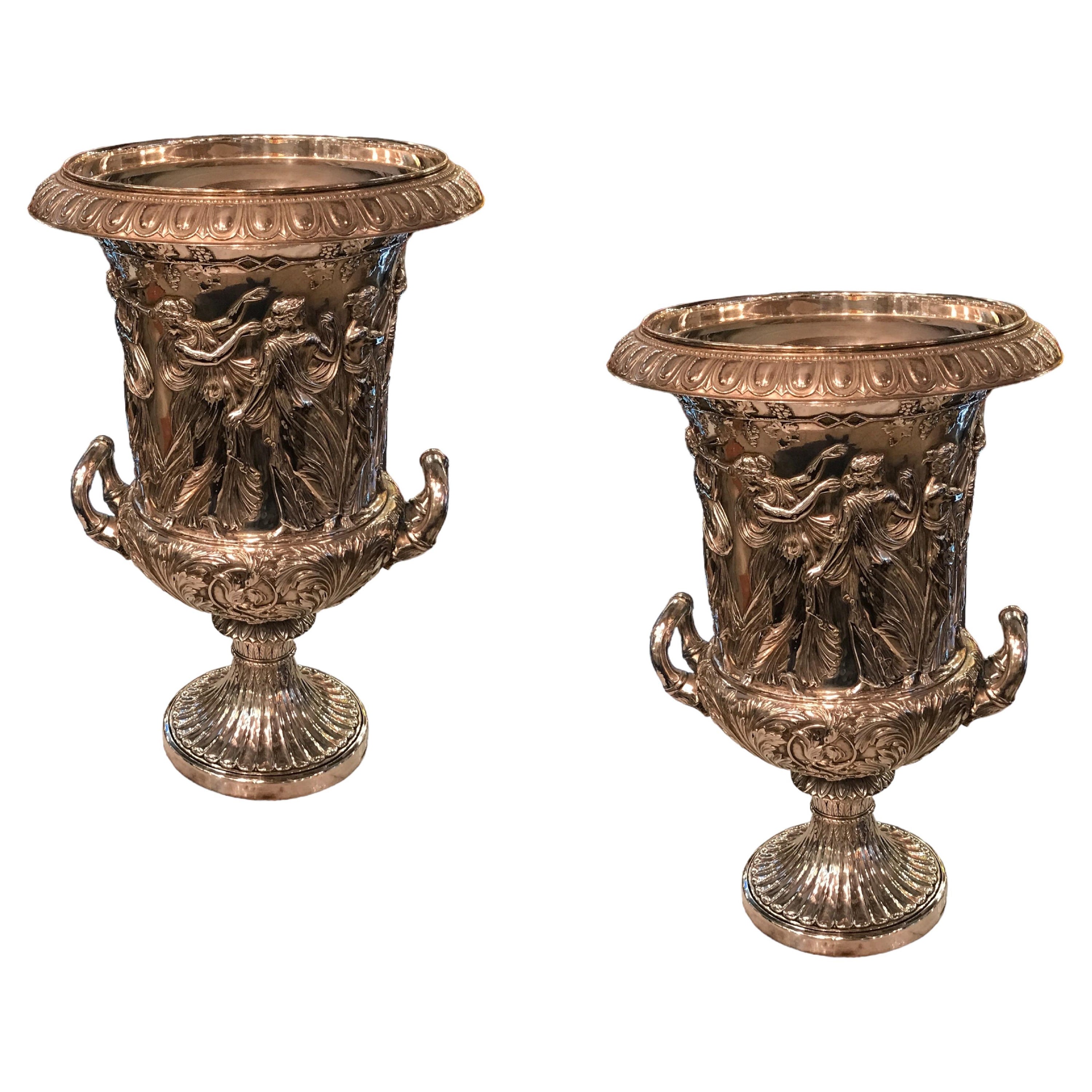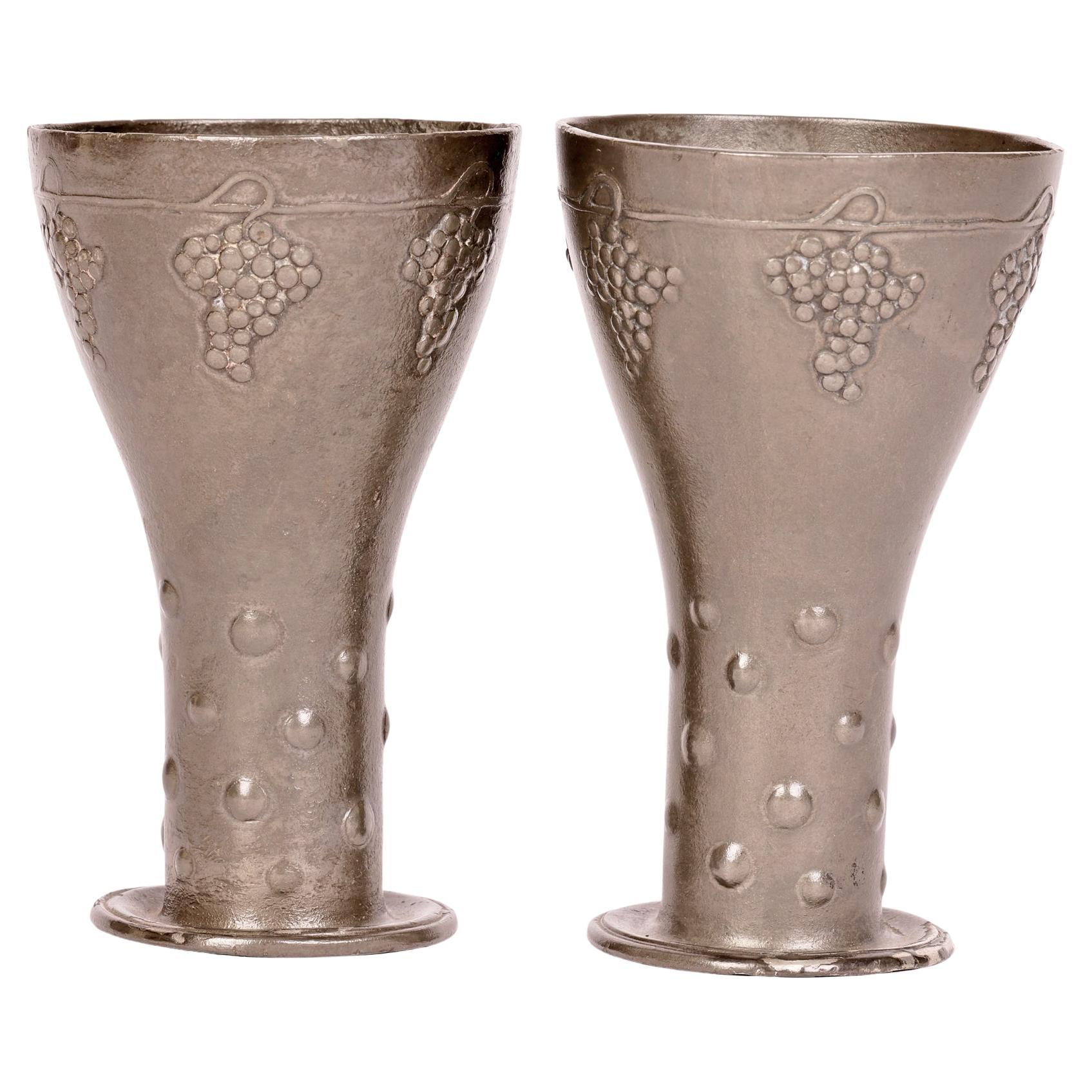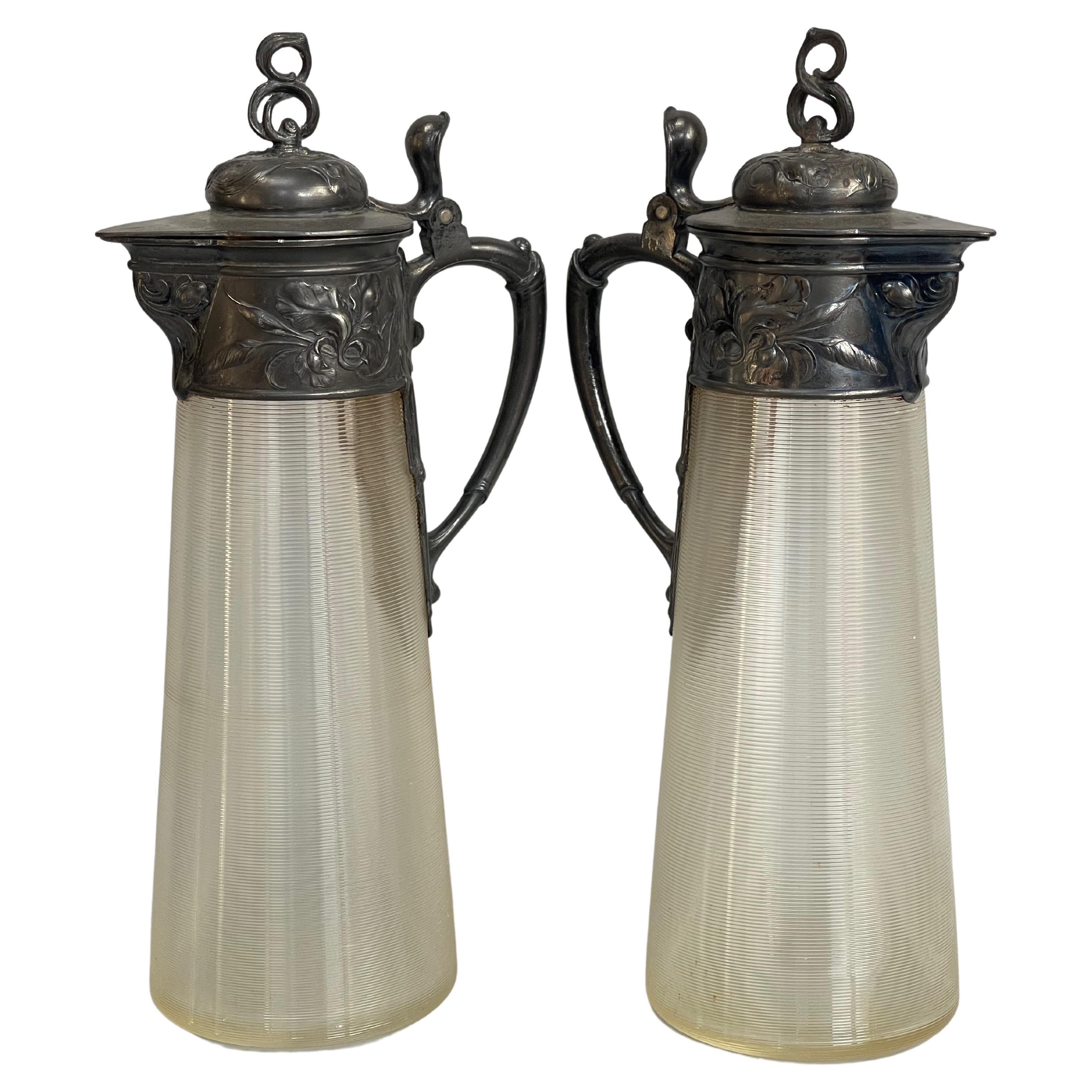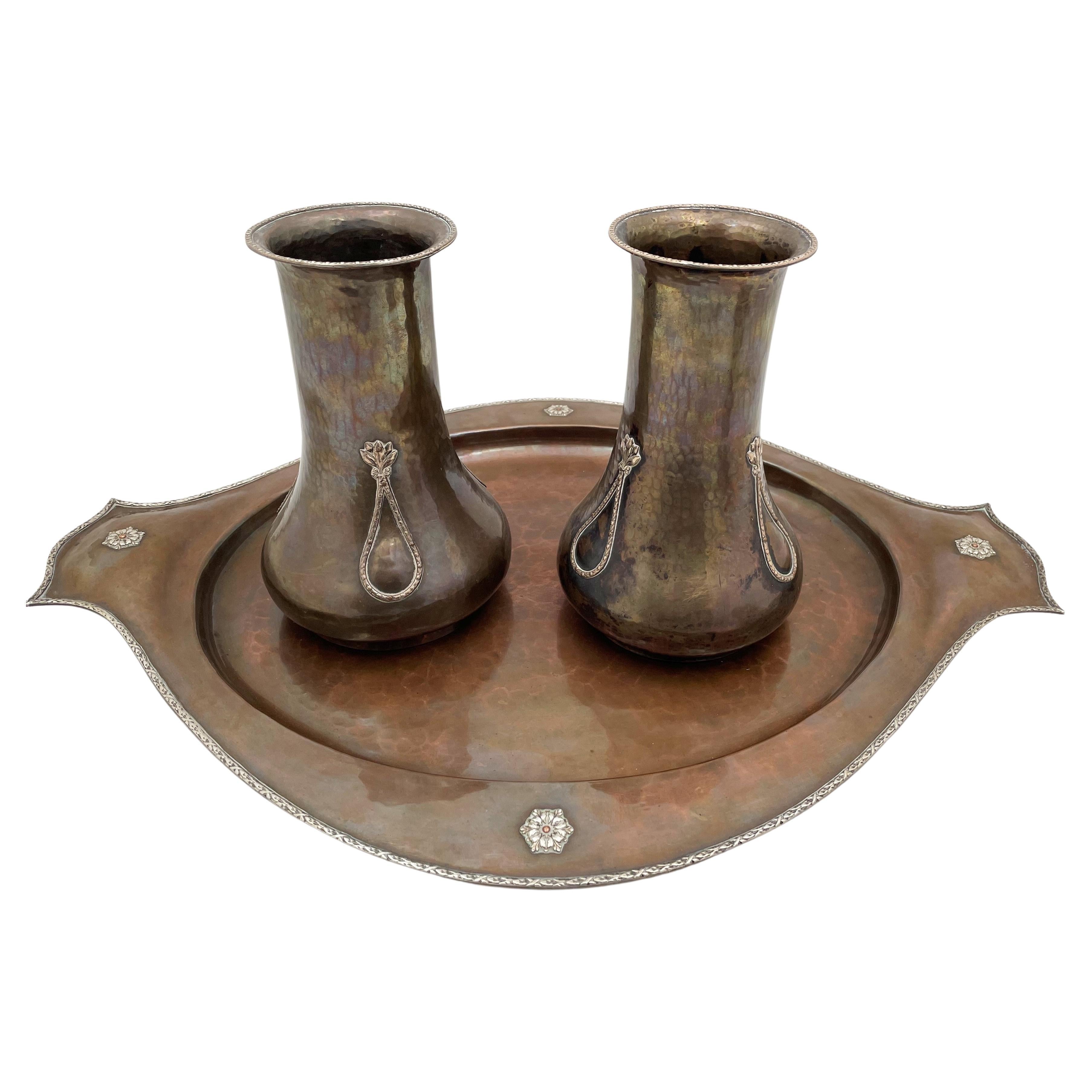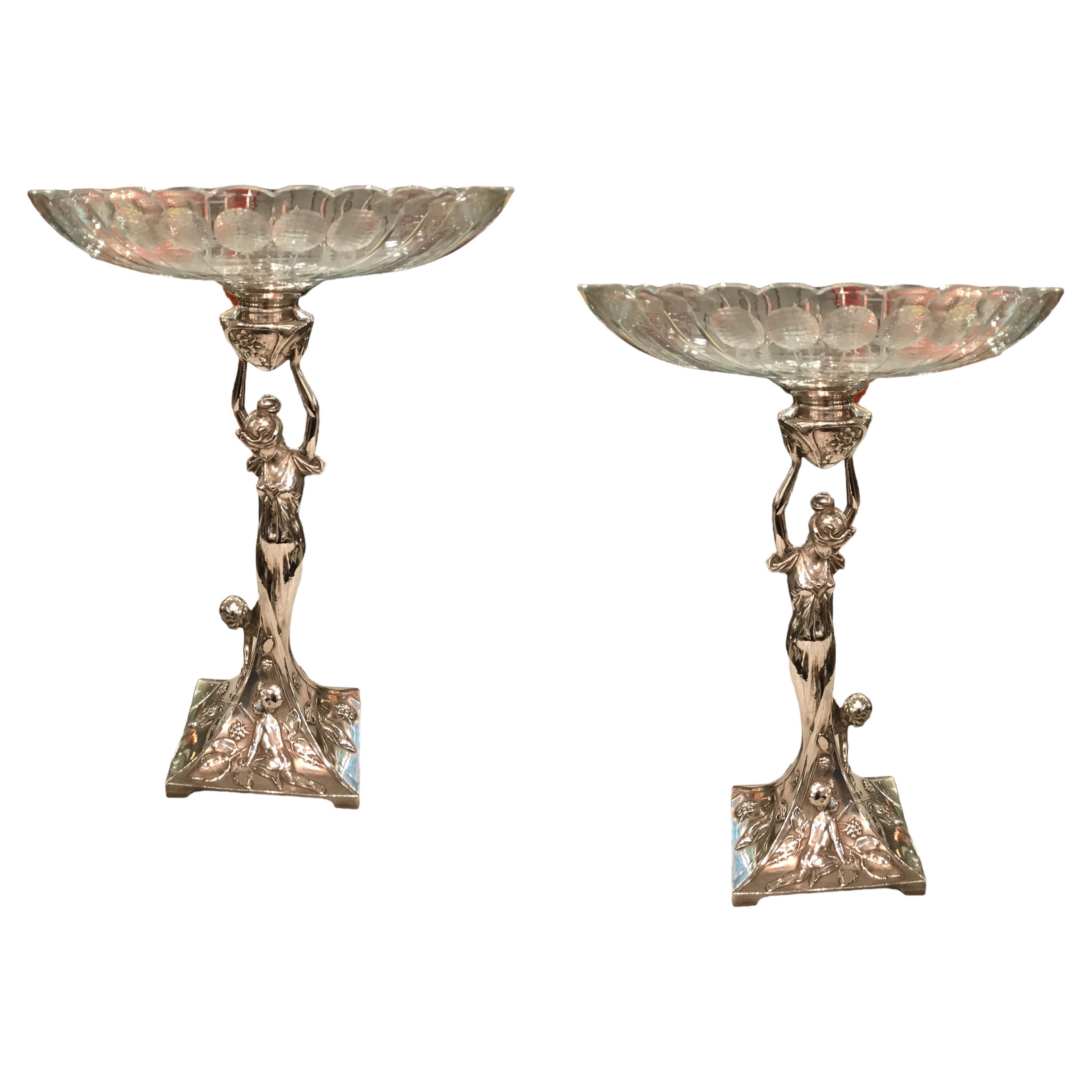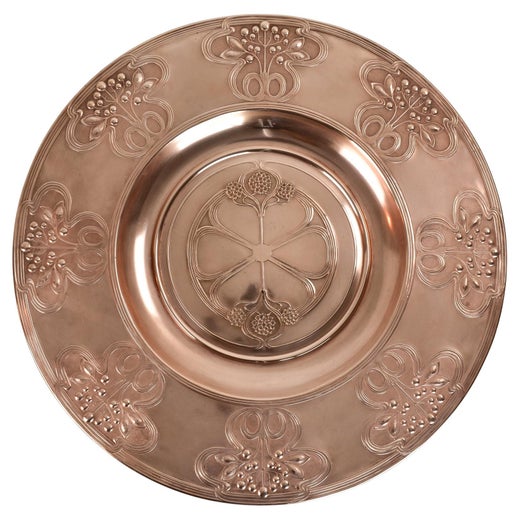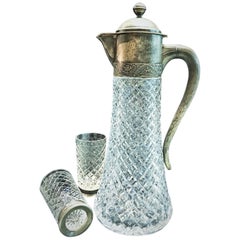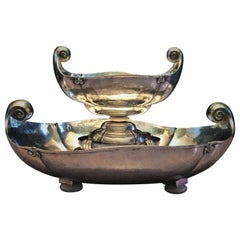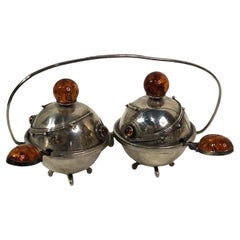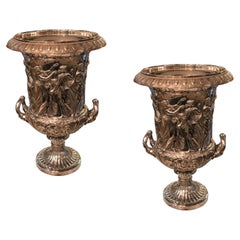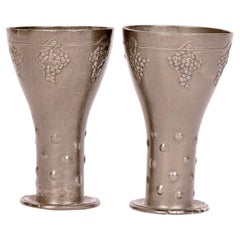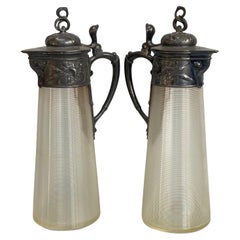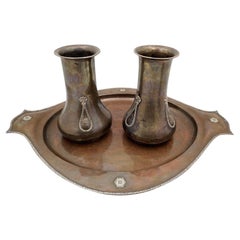WMF, A Pair of German Jugendstil Copper and Wood Challises, circa 1910
About the Item
- Creator:WMF Württembergische Metallwarenfabrik (Manufacturer)
- Dimensions:Height: 10.88 in (27.64 cm)Diameter: 4.88 in (12.4 cm)
- Sold As:Set of 2
- Style:Jugendstil (Of the Period)
- Materials and Techniques:
- Place of Origin:
- Period:1910-1919
- Date of Manufacture:circa 1910
- Condition:Wear consistent with age and use. We make a best effort to provide a fair and descriptive condition report. Please examine the photos attentively, as they are an integral part of item descriptions.
- Seller Location:New York, NY
- Reference Number:1stDibs: LU281938591933
WMF Württembergische Metallwarenfabrik
The fine brass, copper and silver metalware produced by distinguished manufacturer Württembergische Metallwarenfabrik (WMF) has adorned the tabletops of restaurants, hotels and homes around the world. WMF is especially prized by collectors for its Art Nouveau works of the late 19th century and Art Deco pieces manufactured throughout the early 20th century.
WMF traces its beginnings to 1880 when the merger of Straub & Sohn and Ritter & Co. formed the public limited company Württembergische Metallwarenfabrik. The company initially focused on tableware and decorative pieces, such as vases and planters. In 1892, WMF introduced its patented “perfect hard silver plating,” a technology that distributes twice as much silver to the sections of cutlery that experience the most wear, allowing the whole piece to hold its luster longer than other silver-plated products.
In 1905, WMF acquired a majority holding of Orivit AG, a company in Cologne that manufactured products from a tin alloy, further expanding its range of materials. By 1910, its main facility in Geislingen, Germany, employed 4,000 workers. It had branches in Vienna, Warsaw and London, and printed a catalog in 12 languages.
As a German business, WMF experienced extensive asset loss in the aftermath of the world wars. However, by 1950, its main facility once again had a workforce of more than 3,000 employees, and its high-quality products returned to popularity. There was an increase in demand for its Cromargan cutlery as well as work by WMF’s preeminent lighting designer, Wilhelm Wagenfeld.
By the 1960s, WMF’s main facility had 5,800 employees. More factories were opened to keep up with demand. WMF is now one of the largest manufacturers of metalware in the world and continues to produce pieces of superb quality. The company has over 200 branches in Germany, Austria and Switzerland, and owns branches in 40 other countries.
On 1stDibs, explore serveware, decorative objects, lighting and more from Württembergische Metallwarenfabrik (WMF).
- ShippingRetrieving quote...Shipping from: New York, NY
- Return Policy
More From This Seller
View AllVintage 1960s Russian Mid-Century Modern Crystal Serveware
Crystal, Silver
Vintage 1940s Italian Art Deco Centerpieces
Silver
Mid-20th Century American Mid-Century Modern Candlesticks
Brass
Vintage 1940s British Art Deco Sterling Silver
Silver
Antique 1890s English Grand Tour Candelabras
Bronze
Antique Late 19th Century Japanese Japonisme Candelabras
Bronze
You May Also Like
Antique 1850s German Art Nouveau Wine Coolers
Metal
Antique Early 1900s German Jugendstil Barware
Pewter
20th Century German Art Nouveau Pitchers
Silver Plate
Early 20th Century English Arts and Crafts Platters and Serveware
Silver, Sterling Silver, Copper
Antique Early 1900s German Art Nouveau Vases
Crystal, Metal
Antique Late 19th Century American Victorian Sterling Silver
Sterling Silver
